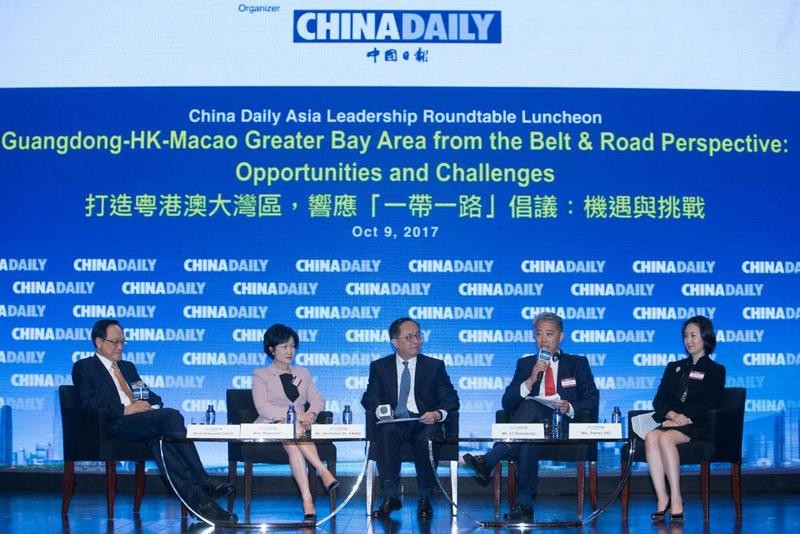2017-10-09
Luo Weiteng

HONG KONG – A grand plan to create a globally competitive cluster of metropolises in the Pearl River Delta calls for higher-level inter-governmental collaboration and coordination, a China Daily Asia Leadership Roundtable forum heard on Monday in Hong Kong. The Guangdong-Hong Kong-Macao Greater Bay Area plan, an initiative testing the region’s potentials to be the country’s next growth engine, is looking to ride high on the undertakings and goals of the nation-led Belt and Road Initiative. “While the Greater Bay Area plan remains in the planning stage, the Belt and Road Initiative, which has developed into an all-out national strategy of the world’s second-largest economy, has gotten on the fast track of execution and seen resources starting to flow into different areas,” Nicholas Yang Wei-hsiung, secretary for innovation and technology of the Hong Kong Special Administrative Region Government, told the roundtable. With the 11 cities across the region, including Hong Kong, Macao and Guangzhou, Shenzhen and Zhuhai in Guangdong province, betting big on gaining momentum from the proposed Greater Bay Area, the roundtable panelists called for high-level closer cooperation to achieve a win-win situation for all. “Instead of just either being competitive or collaborative, we have to work toward a competitive advantage, an advantage that would ensure collaboration,” said Pansy Ho Chiu-king, group executive chairperson and managing director of Shun Tak Holdings. “In future, we need to see governments working together, and trying to assimilate efforts so that there could be pooled resources to create what we call ‘one journey multiple destinations travel’,” she said. “In the global context, this is a very pretty trendy development.” Regina Ip Lau Suk-yee, co-chair of the Maritime Silk Road Society, agreed. “With an ultimate objective of making the Greater Bay Area more open, more innovative and more integrative, we need a high-level coordinative mechanism,” she said. Ip believed that the grand plan cannot go without engaging “somebody very senior at the central government level”. “It has been suggested that it should be not be lower than the vice-premier level,” she added. To illustrate how the grand plan could put the region on course to benefit from synergies, whereby cities would give full play to their competitive edges and strategically focus on industries in which they have comparative advantages, Yang pointed out that Hong Kong’s efforts fit in with the Greater Bay Area’s quest to become an international innovation and technology hub. Although the SAR city stands as a pretty much important participant, it shares the common goal with Shenzhen and Guangzhou to develop the area into an innovation and technology center. This is where the cities can reinforce the theme of regional collaboration, he said. Backed by higher-level regional cooperation and integration, Hong Kong, equipped with better access to the manufacturing hub of the Pearl River Delta and massive markets on the Chinese mainland and along the Belt and Road routes, is set to reap the fruits by joining hands with other cities in the Greater Bay Area, Yang added. Billed as one of key events to mark the 20th anniversary of Hong Kong’s return to its motherland, as well as the 20th year of publication of China Daily Hong Kong Edition, the China Daily Asia Leadership Roundtable forum has drawn together heavyweight policymakers, business leaders and academics from around the world to share their insights into ways of building a world-class bay area for the world’s second-largest economy under the context of the Belt and Road Initiative. sophia@chinadailyhk.com